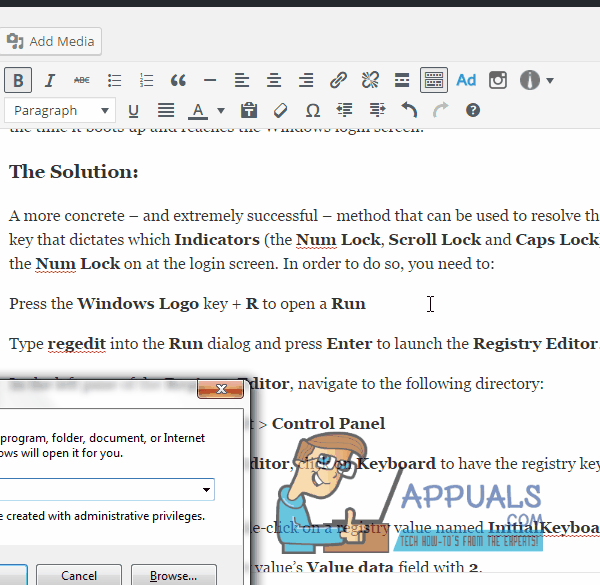SOLVED: Make the Num Lock Stay On At Startup in Windows 7/Vista
Almost every Windows Vista and Windows 7 user expects their computer’s Num Lock to be turned on automatically when they boot it up and it gets to the Windows login screen. However, many Windows 7/Vista users have been and continue to be affected by an issue where their computer’s Num Lock fails to turn on automatically at startup. Where applicable, users affected by this issue have reported that they continued to suffer from this issue even though the Num Lock was set to be turned on at startup in their computer’s BIOS.
Working around this problem is pretty easy – all you need to do is press the Num Lock key on your keyboard once your computer boots up, and the Num Lock will be turned on, but what purpose do computers serve us if not our convenience? This problem is not a question of how easily someone affected by it can work around it but of why affected users are unable to enjoy the small but highly significant pleasure of having their Num Lock automatically turned on for them when their computer boots up.
This problem is a matter of user convenience, making it an issue of the highest priority. In almost all cases, this issue is caused by a corruption or altering of specific registry keys. Thankfully, though, trying out a neat little Num Lock trick or simply fixing the registry keys in question is enough to resolve this problem in most cases. If you have fallen prey to this issue, the following is both the trick and the solution that you can use to try and fix this issue and have your Num Lock turn on automatically at startup:
The Trick:
A neat little trick that many Windows 7 and Vista users have been able to use to get their computers to automatically turn the Num Lock on at startup is to manually turn the Num Lock on at startup, and then shut their computers down with the Num Lock turned on. To apply this little trick, you need to:
Boot your computer up.
Wait until you reach the Windows login screen.
Once you are at the Windows login screen, press the Num Lock key on your keyboard to turn the Num Lock
With the Num Lock turned on, use the Power button located at the bottom corner of your Windows login screen to shut your computer down.
Once you have completed the steps listed above, your computer should now automatically turn the Num Lock on by the time it boots up and reaches the Windows login screen.
The Solution:
A more concrete – and extremely successful – method that can be used to resolve this problem is to set the registry key that dictates which Indicators (the Num Lock, Scroll Lock and Caps Lock) are turned on at startup to turn the Num Lock on at the login screen. In order to do so, you need to:
Press the Windows Logo key + R to open a Run
Type regedit into the Run dialog and press Enter to launch the Registry Editor.
In the left pane of the Registry Editor, navigate to the following directory:
HKEY_USERS > .Default > Control Panel
In the left pane of the Registry Editor, click on Keyboard to have the registry key’s contents displayed in the right pane.
In the right pane, locate and double-click on a registry value named InitialKeyboardIndicators to modify it.
Replace whatever is in the registry value’s Value data field with 2.
Click on OK.
Exit the Registry Editor and restart your computer.

At startup, check to see whether or not the Num Lock is turned on automatically when you get to the login screen.
Note: If, once your computer restarts, you see that the Num Lock isn’t turned on at the login screen, repeat each and every single one of the steps listed and described above, but this time, when you get to step 6, replace whatever is in the Value data field of the InitialKeyboardIndicators registry value with 2147483648 instead of 2. If even that doesn’t work, repeat all of the steps, this time replacing whatever is in the InitialKeyboardIndicators registry value’s Value data field with 2147483650 instead of 2147483648.